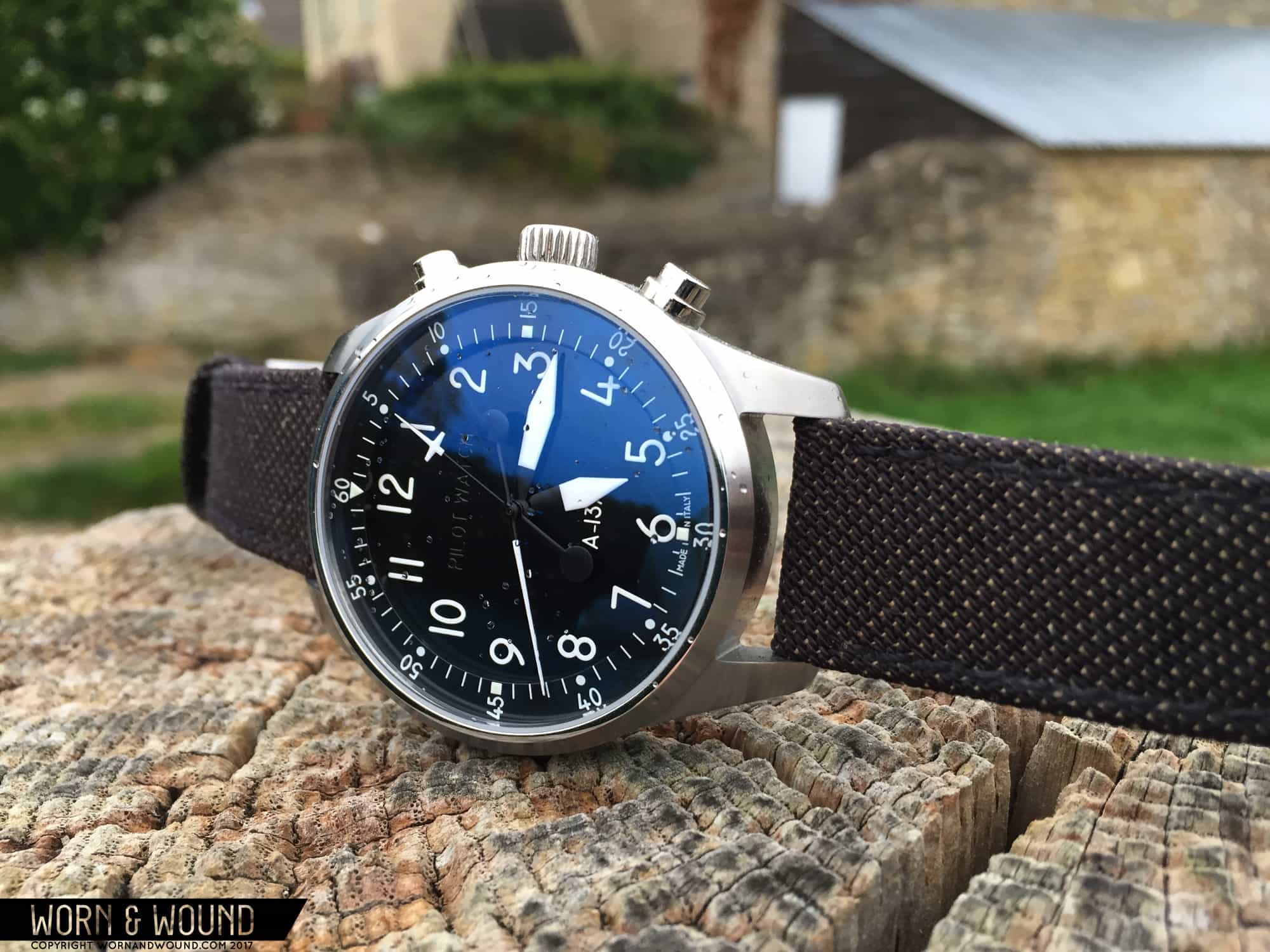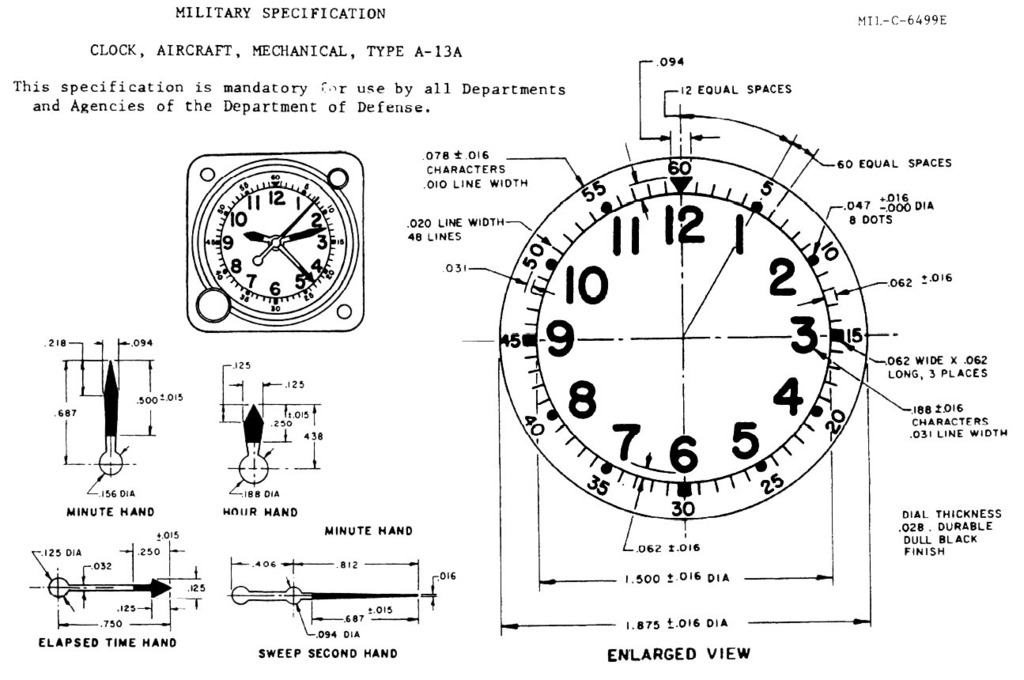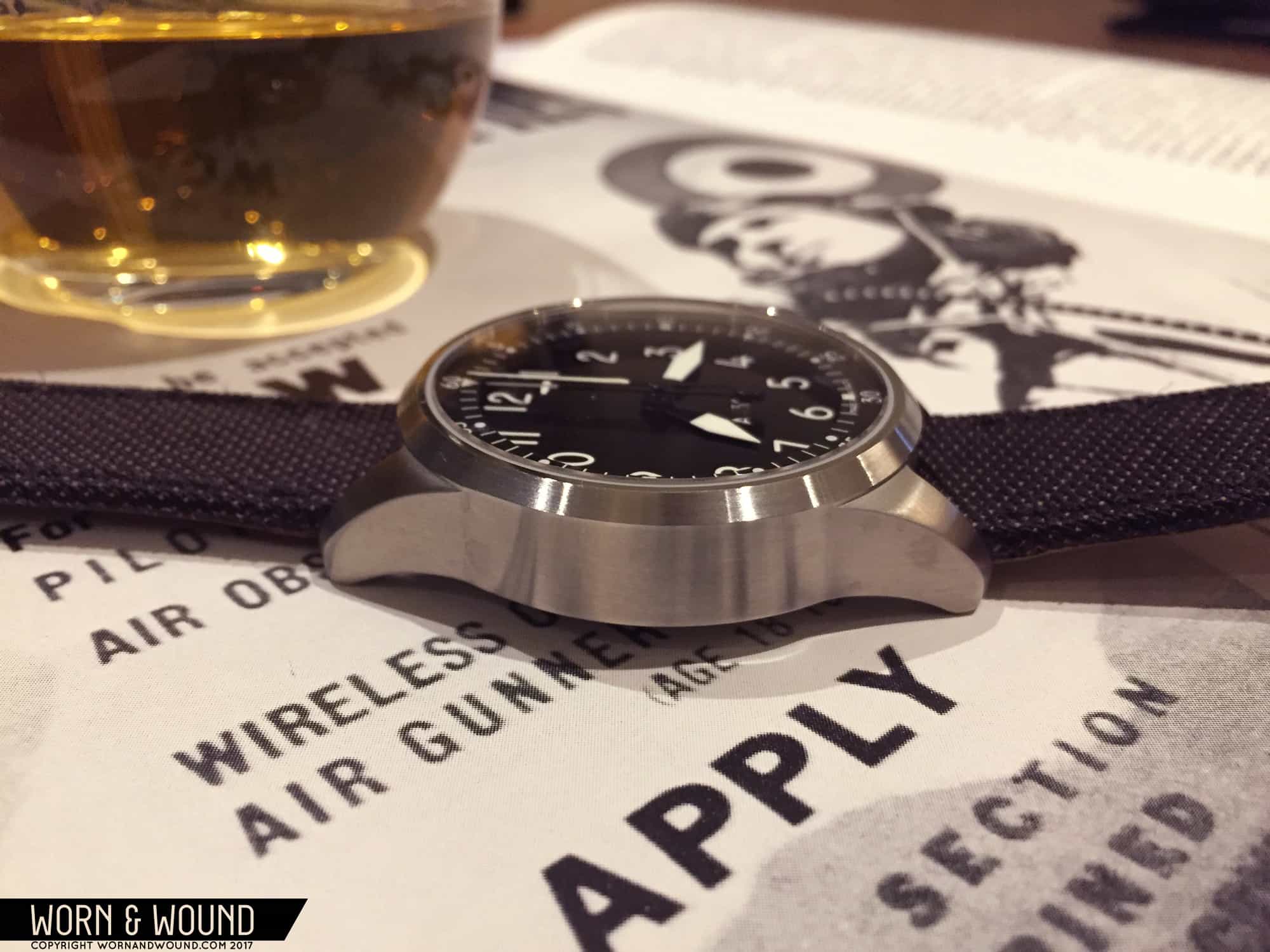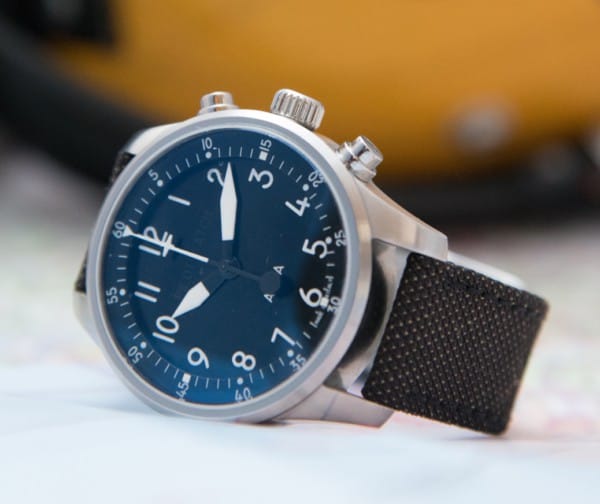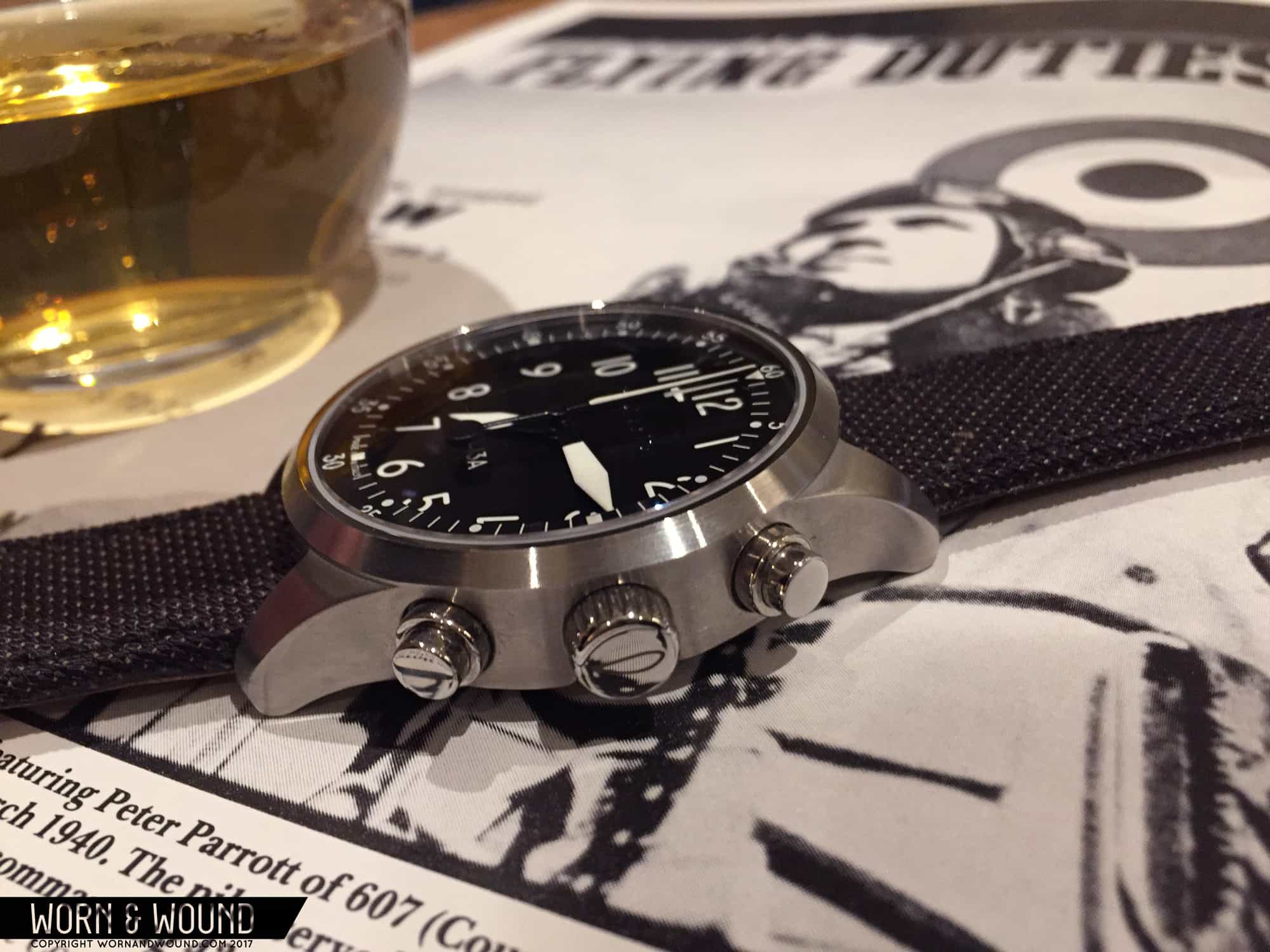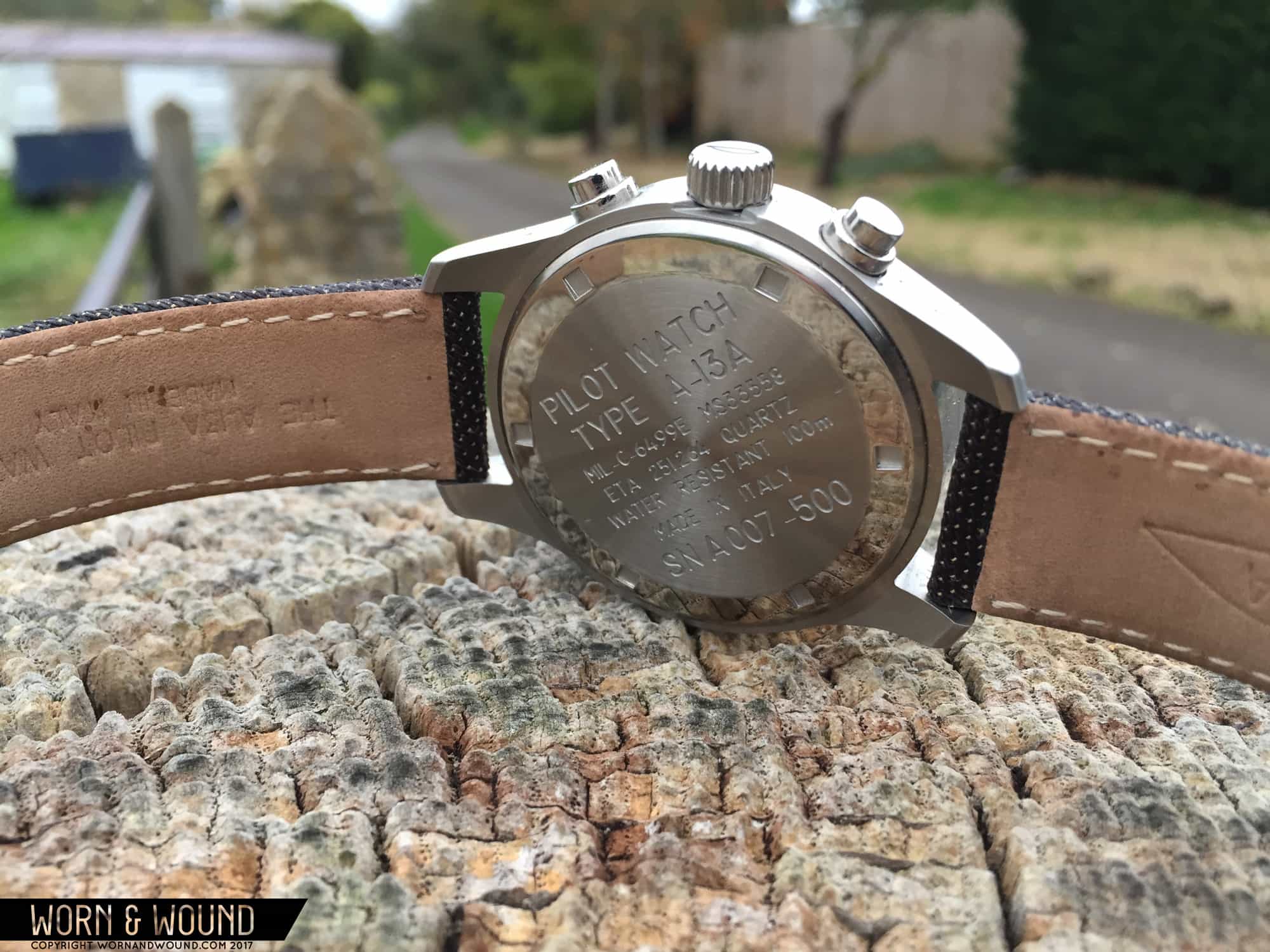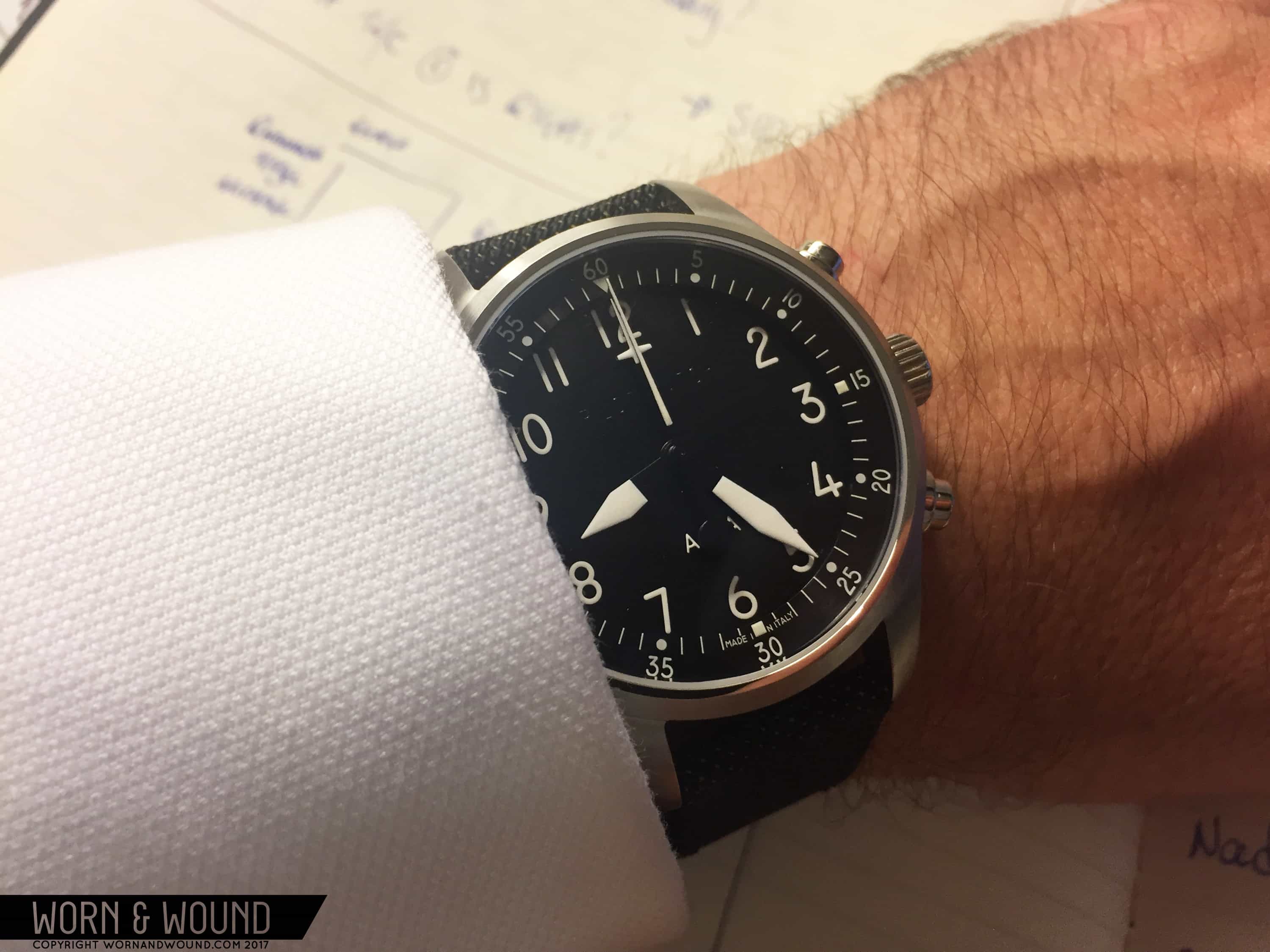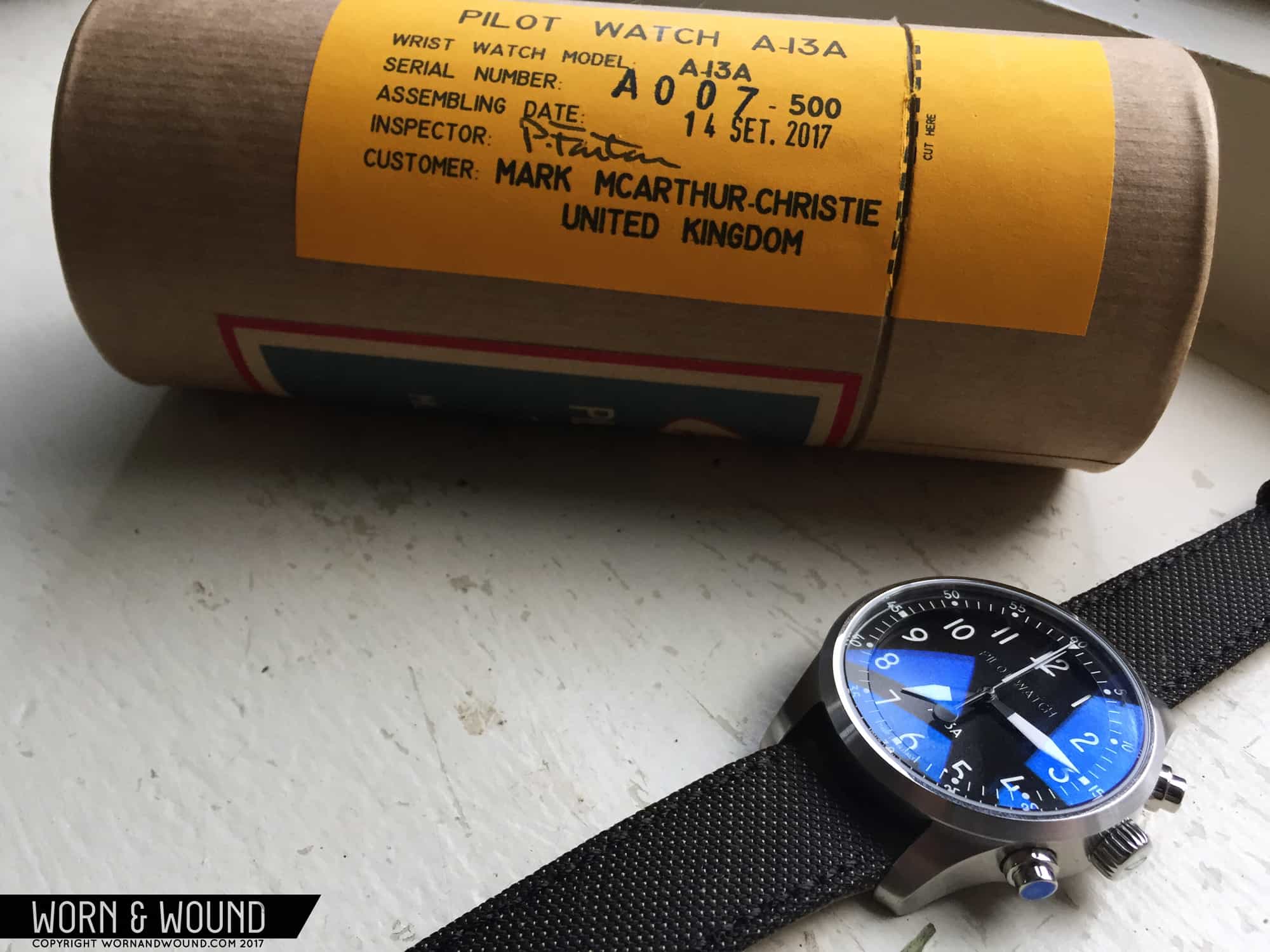When Worn & Wound originally spoke to Paolo Fanton back in January this year, we were keen to see what his A-13A pilot watch would look like when it made it out of prototyping and into production. Well, a parcel arrived last week from Italy, so I’ve had a chance to unpack it and get my very own A-13A on my wrists for a quick look.
Actually, that’s not quite accurate. It’s not been off my wrist since it arrived.
It’s always nice (if unusual) to be right. In January, Paolo commented that “. . . it’s not a watch to show off to your friends while drinking a Martini downtown.” I suggested that although you might not show it off, I was pretty sure it’d get a few comments.
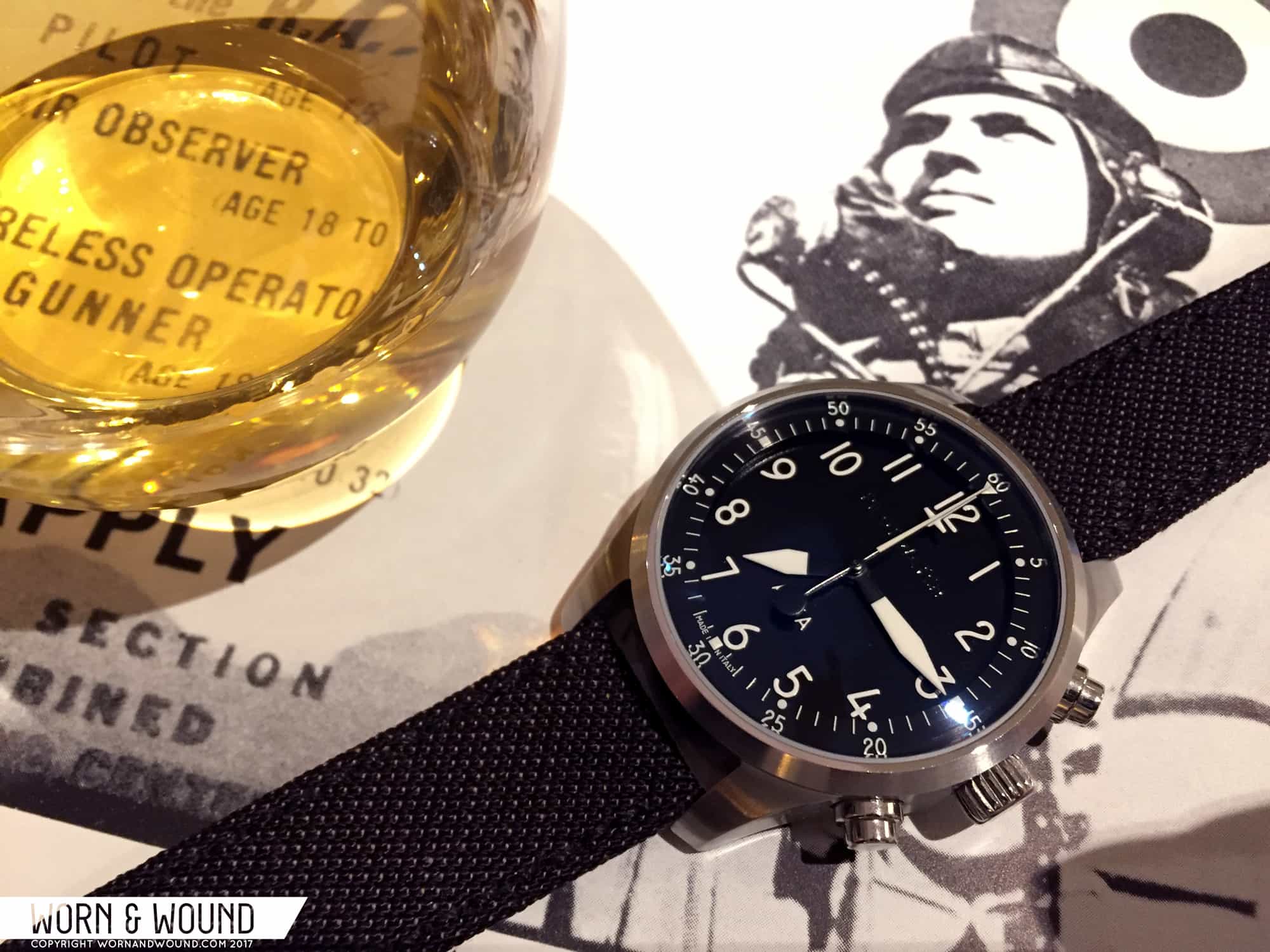
In fact, the A-13A has got more nods than any other watch this writer owns. It simultaneously aced both the “Pip Test” and the even tougher “Business Partner Rating.” Pip is my fiancée and indulges my watch obsession although seldom notices which one I’m wearing. Without me even pointing out the A-13A, she spotted it and declared “You know, I think that’s my favorite watch of yours.” Winning a straight double, my non-watchie-but-Nomos-owning business partner—quite unprompted—asked, “What’s the new watch? I love that!” The last watch that got him that excited was an IWC MkXII.









 Featured Videos
Featured Videos




